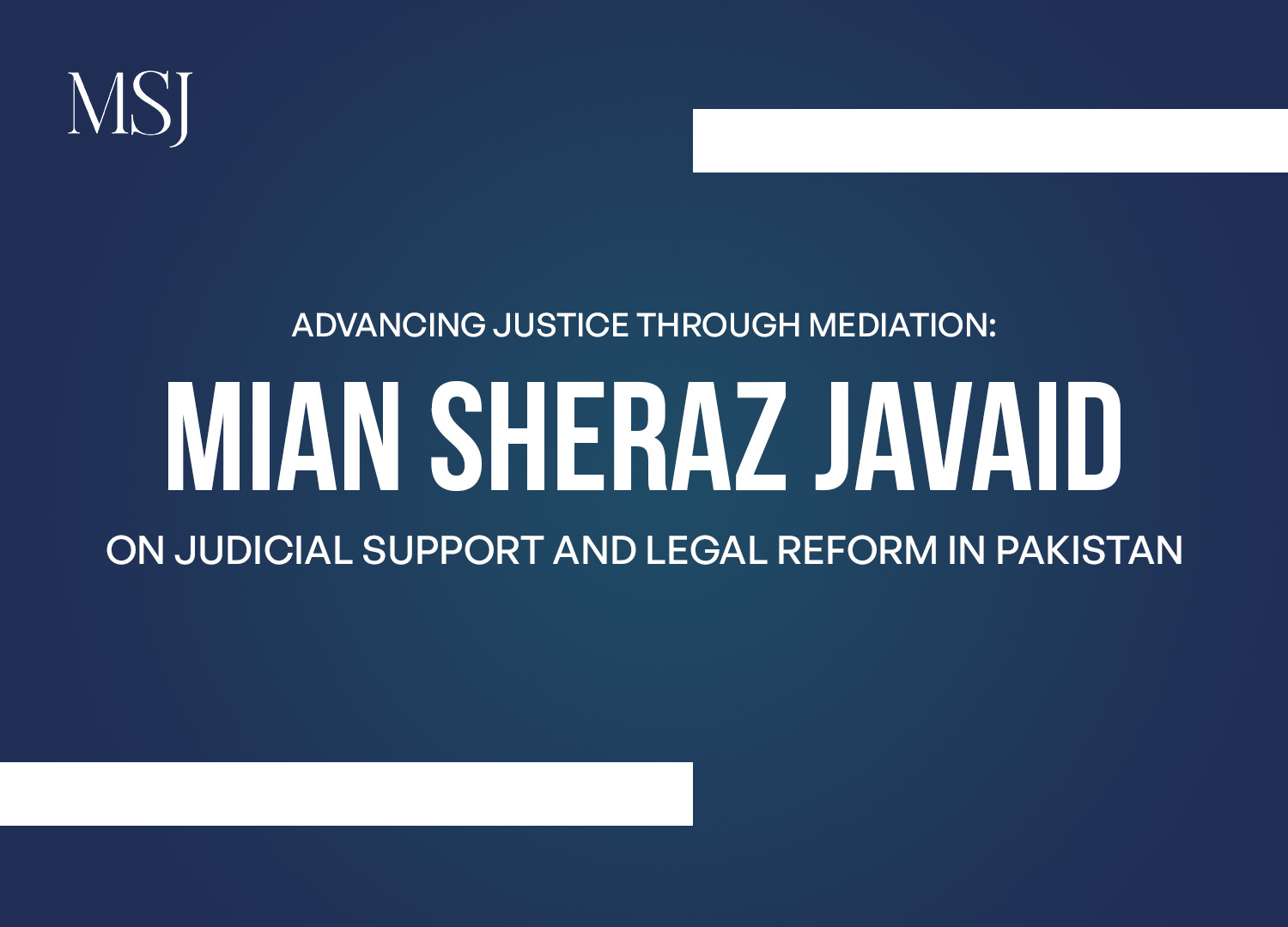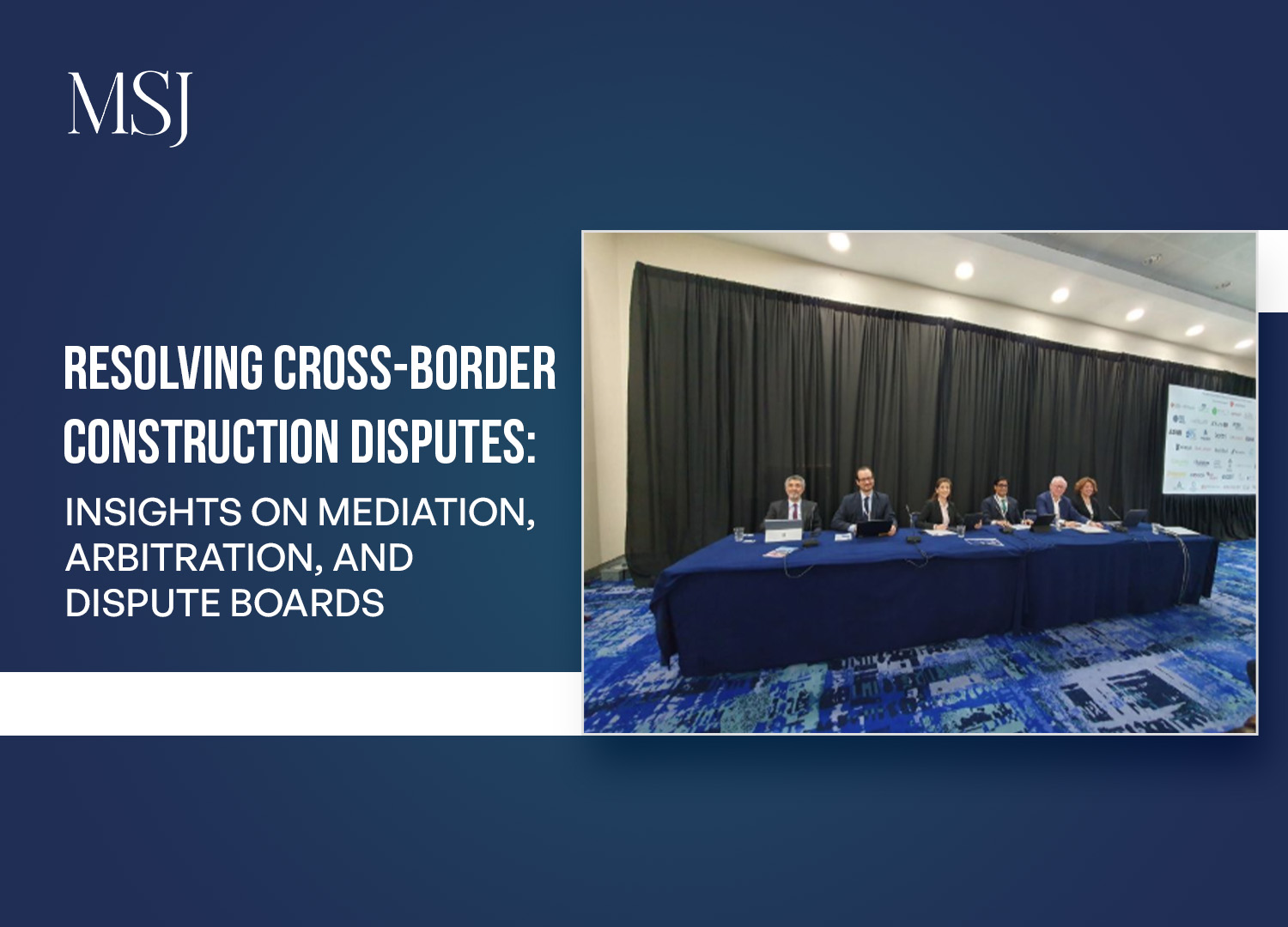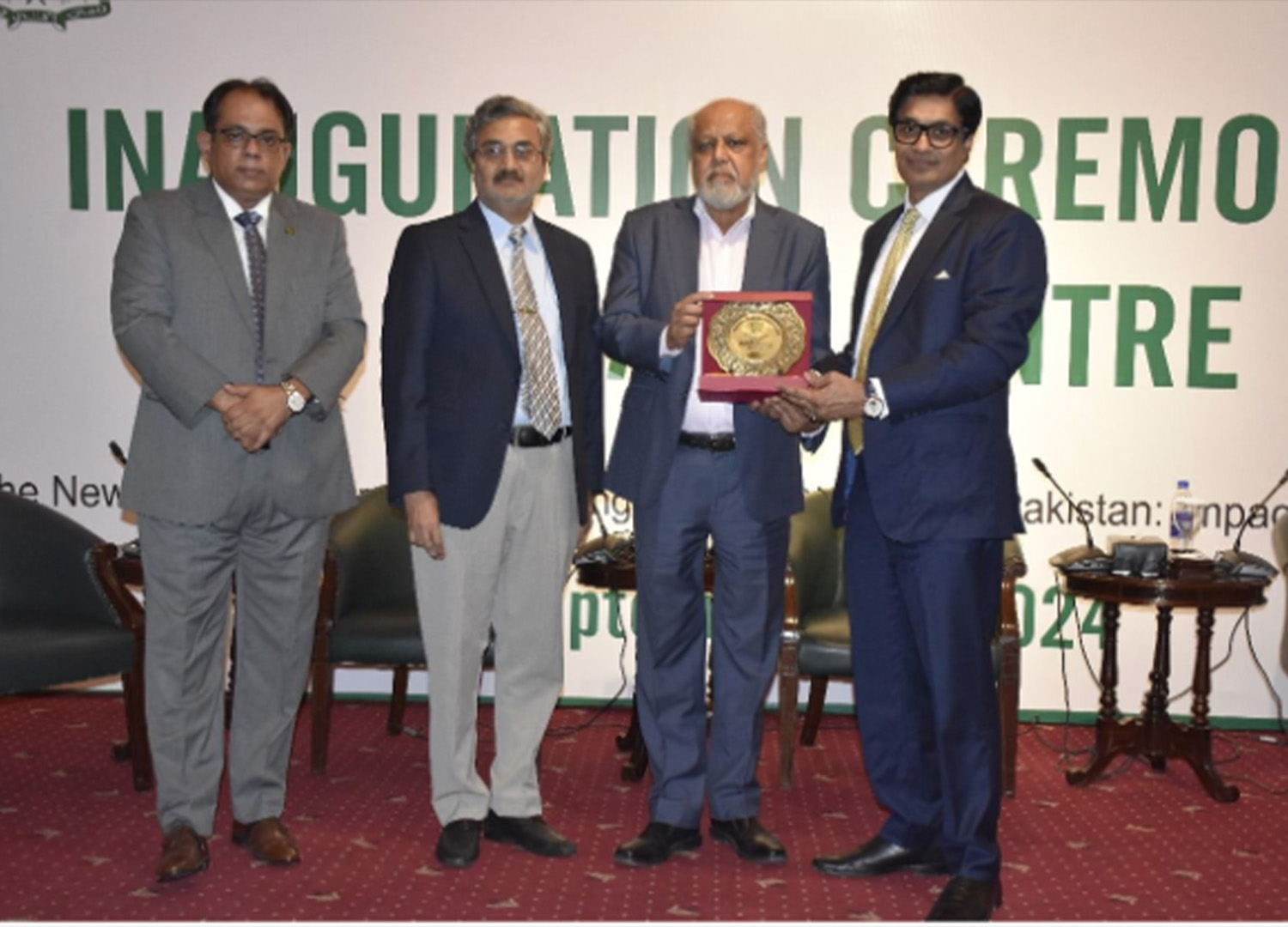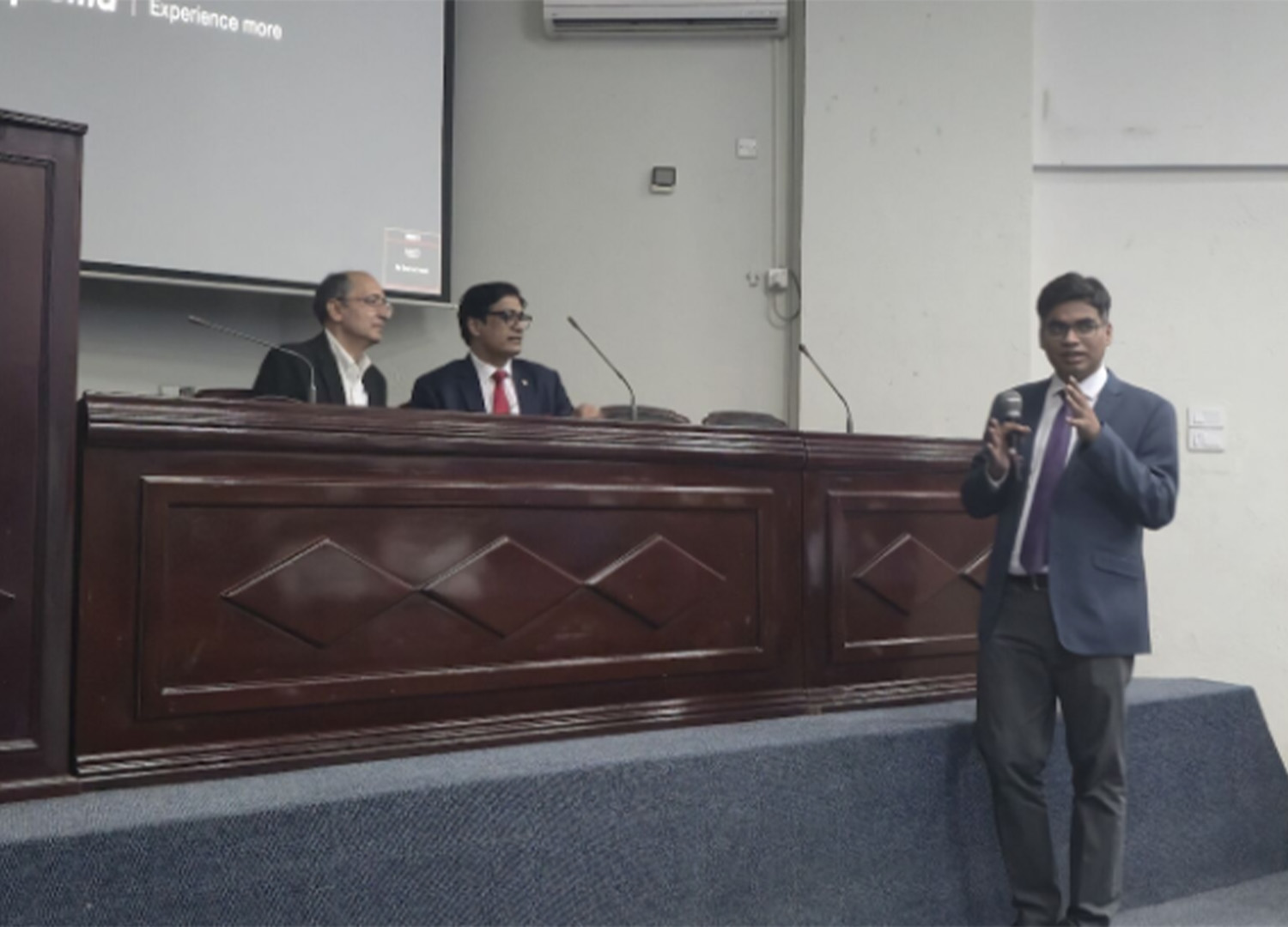The Evolution of EPC Contracts: Insights from the 7th Annual Project Management Summit
The Evolution of Construction Law Guidance
Mian Sheraz Javaid attended the 7th Annual EPC Project and Contract Management Summit in London, where he delivered a keynote address regarding contracting trends in the current construction climate. His address was divided into certain key topics, during which he discussed the construction industry, sustainability, and collaboration between the different professionals working together during a development project.
TRENDS OF CONSTRUCTION LAW
Sheraz started his address by discussing certain significant legislations that underpin the modern-day construction framework in the UK, such as the Housing Grants, Construction and Regenration Act of 1996, which incorporates statutory adjudication and the Contract (Rights of Third Parties) Act of 1999. Tracing the evolution of construction law, Sheraz’s address touched upon other modern methodologies such as lean construction practices, which use an Integrated Project Delivery (IPD) system to align the owner, the design team, and the construction team onto a single contract. This highlighted the importance of such an alignment, as it encourages trust and collaboration and creates an environment where innovation can thrive. Sheraz also addressed the rising trend of technological use that has been recently playing a significant role in the construction industry. Following the insightful discussion of the evolution of construction law, the address transitioned into an in-depth review of contracting trends and how they are being impacted by the current climate of the construction industry.
Sheraz discussed the position of the UK construction industry as a leader in the Engineering, Procurement, and Construction (EPC) contracts worldwide, with more than 3 million people employed and contributing over £110 billion to the country’s GDP.
Quoting several relevant examples of major construction companies that were involved in complex civil engineering challenges, including Balfour Beatty, the UK’s emergence into the field of ECP, a market that is anticipated to rise at a considerable rate between 2023 and 2031.
BIGGEST CHALLENGES IN THE CONSTRUCTION INDUSTRY & HOW TO TACKLE THEM
The growth of the construction industry, however, grappled with several issues in 2023, including rising interest and inflation rates, which inevitably increase project costs and material and compensation costs, which, as a result, reduce contractors’ profit margins. Additionally, following the COVID-19 pandemic, issues of transport bottlenecks and geopolitical uncertainities exposed vulnerabilities in the ECP supply chain, raising material costs, confined production, and restricted freight movement. Such issues, which are a result of an imbalance between the time, cost and quality of a project, eventually lead the end project to topple.
The EPC industry, however, is on its way to consistently grow in a post-pandemic global economy, which Sheraz discussed during the Summit, and several firms, such as ABC Contracting in Africa, were mentioned to signify the growing importance of EPC projects in shaping the industrial landscape throughout the world. Since EPC allows major projects to be executed by a single EPC contractor, where a single single completes the project from engineering through construction, it is an efficient project delivery method to address the time-cost-quality trade-off. Anticipating the growing importance and relevance of the EPC sector in 2024, Sheraz’s analysis led to connecting the rise of renewable energy projects, smart cities, and digital infrastructure with the creation of various opportunities for EPC companies.
WHAT ARE SUSTAINABLE CONSTRUCTION METHODS
Following the trend of construction law, Sheraz went ahead to discuss the issue of sustainability and the need to incorporate methods of eco-friendly construction. With growing concerns over climate change that has taken over the world, Sheraz highlighted the increasing responsibility on construction firms to reduce their environmental impact and how sustainable construction can play a key role in global efforts to limit the impact of climate change. Sheraz’s address singled out the 2015 Paris Agreement for reducing the impact of greenhouse gas emissions from various economic sectors to preserve the environment.
Looking ahead to the future of sustainable construction practices, the Policy Paper of Construction 2025 was a point of discussion, a policy paper that provides a clear path for improving sustainability in construction. It includes details on overseas trade, smart technologies, and green construction and is a part of the UK government’s industrial strategy. The UK has set ambitious targets to reduce carbon emissions by 68% by 2030 compared to 1990 levels and has a target of 77% for 2035. New buildings are expected to be highly energy efficient with low-carbon heating and be zero-carbon-ready by 2025. The government has also set a target for all existing buildings to be retrofitted to improve energy efficiency by 2030. These buildings are expected to produce 75–80% lower carbon emissions compared to current levels.
BEST FUTURE OF CONSTRUCTION LAW
For such a future to become a reality, collaboration between key delivery partners—usually the owner, engineer or architect, supplier, major equipment manufacturers, project managers and contractors—is necessary. The successful collaboration between all these different aspects allows connecting different workflows and establishing a single source of truth that serves as a base for making decisions and taking action. When everyone has access to the same model-based information in real-time, it streamlines the construction process, makes conversations with team members and other stakeholders more productive, and obviates disasters at the time of final accounts.
Building Information Modelling (BIM) significantly facilitates collaboration from the starting design phase. As a 3D tool to start off collaboration, BIM incorporates time-sensitive plans with tasks and duties of all departments, reducing ‘isolated’ activities between the involved teams and increasing cohesiveness toward the end goal. As a digital twin of the project, BIM completes visualisation of the final project with the level of detail and accuracy required for enhancing understanding and reducing ambiguity, providing the right people with the right data at the right time.
Sheraz’s address concluded with an effective and interactive Q&A session, which encouraged the floor to offer their perspectives regarding the construction industry of the UK and the necessary measures for its evolution.










